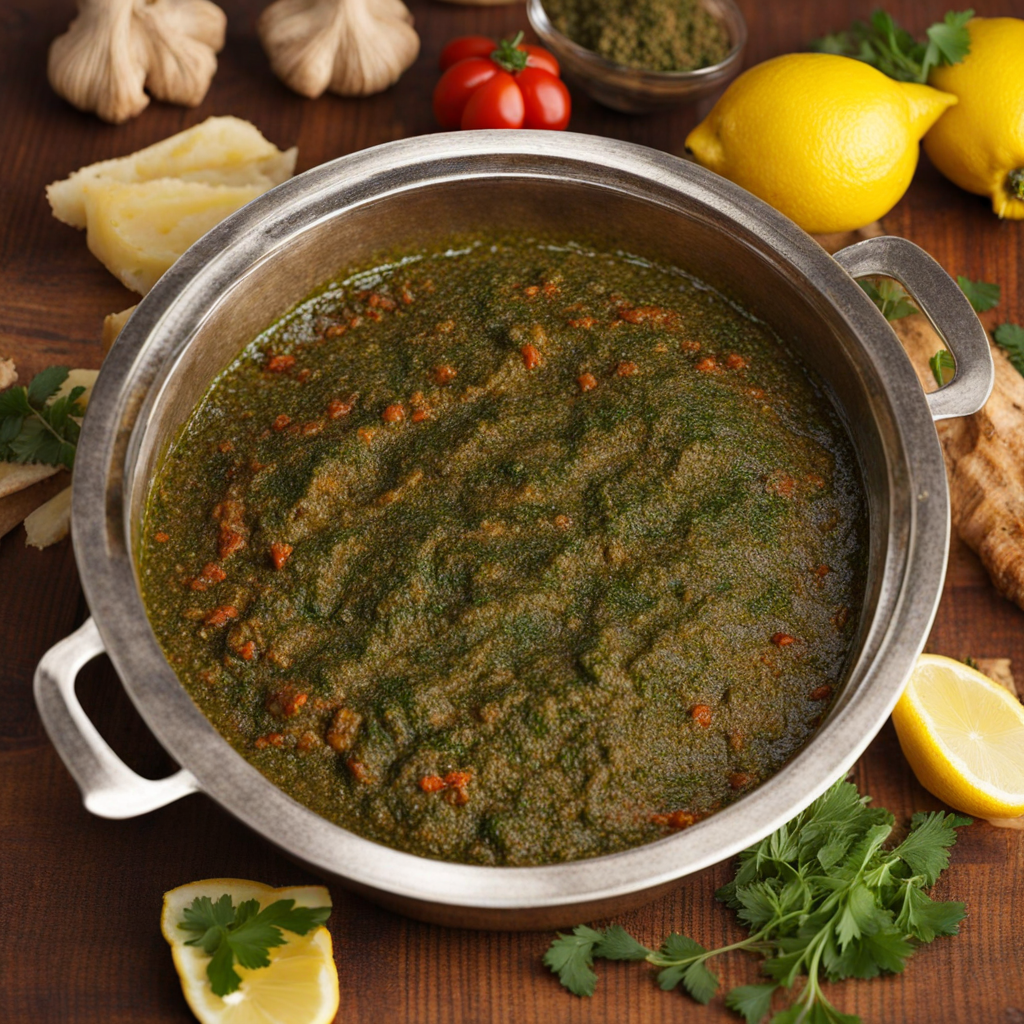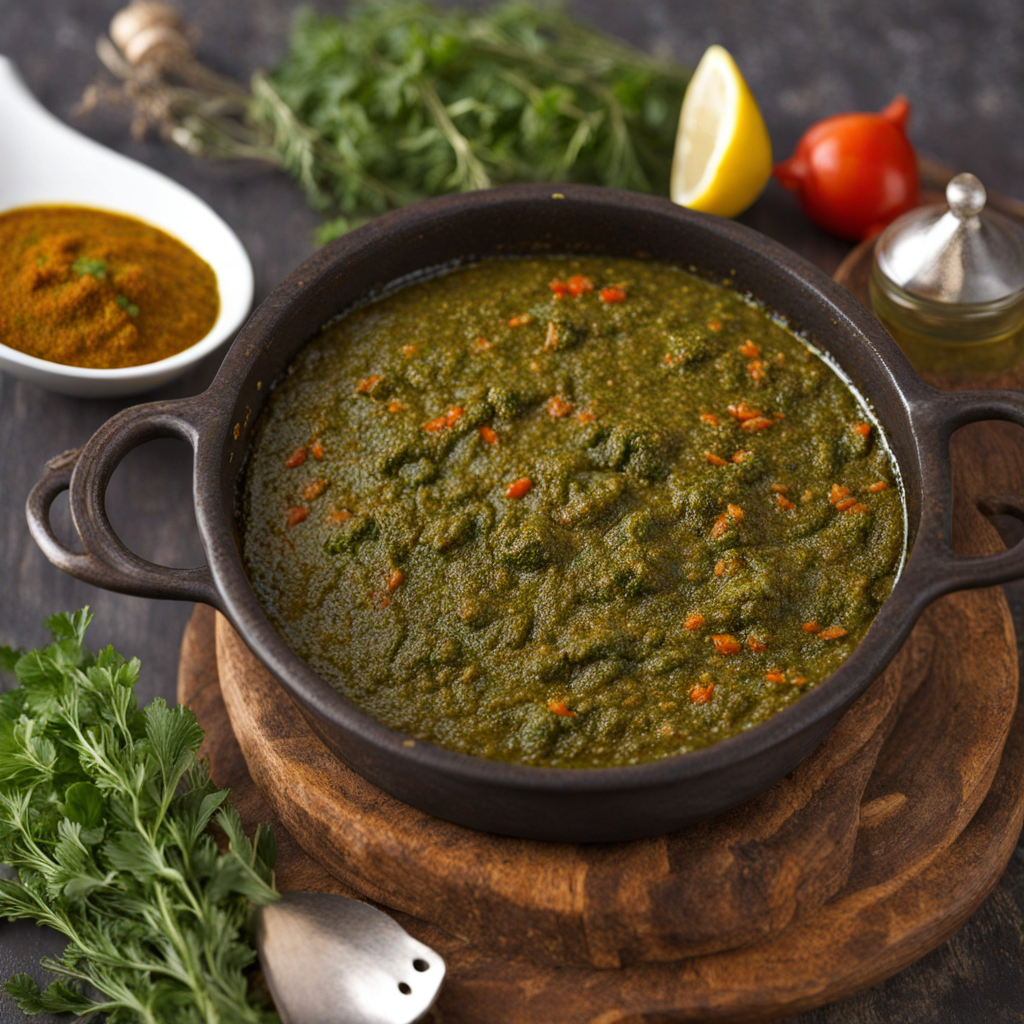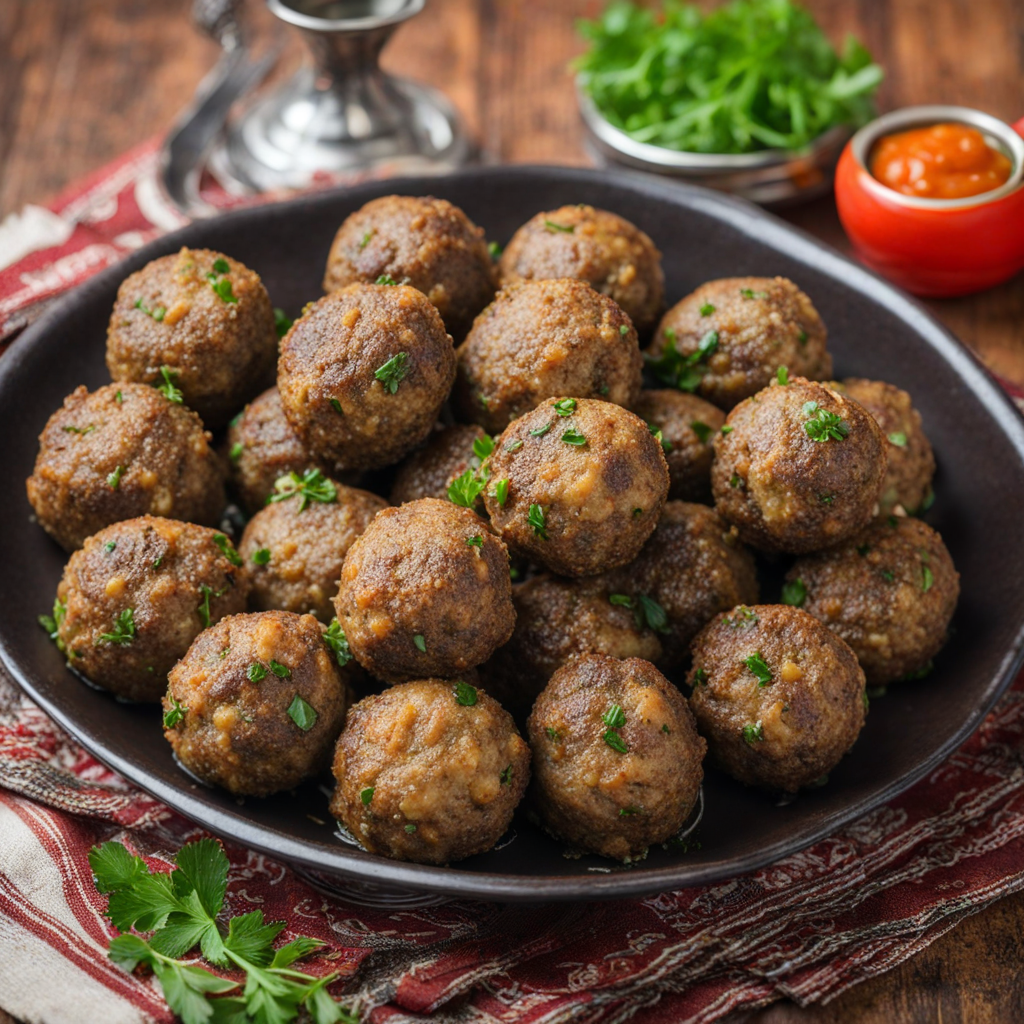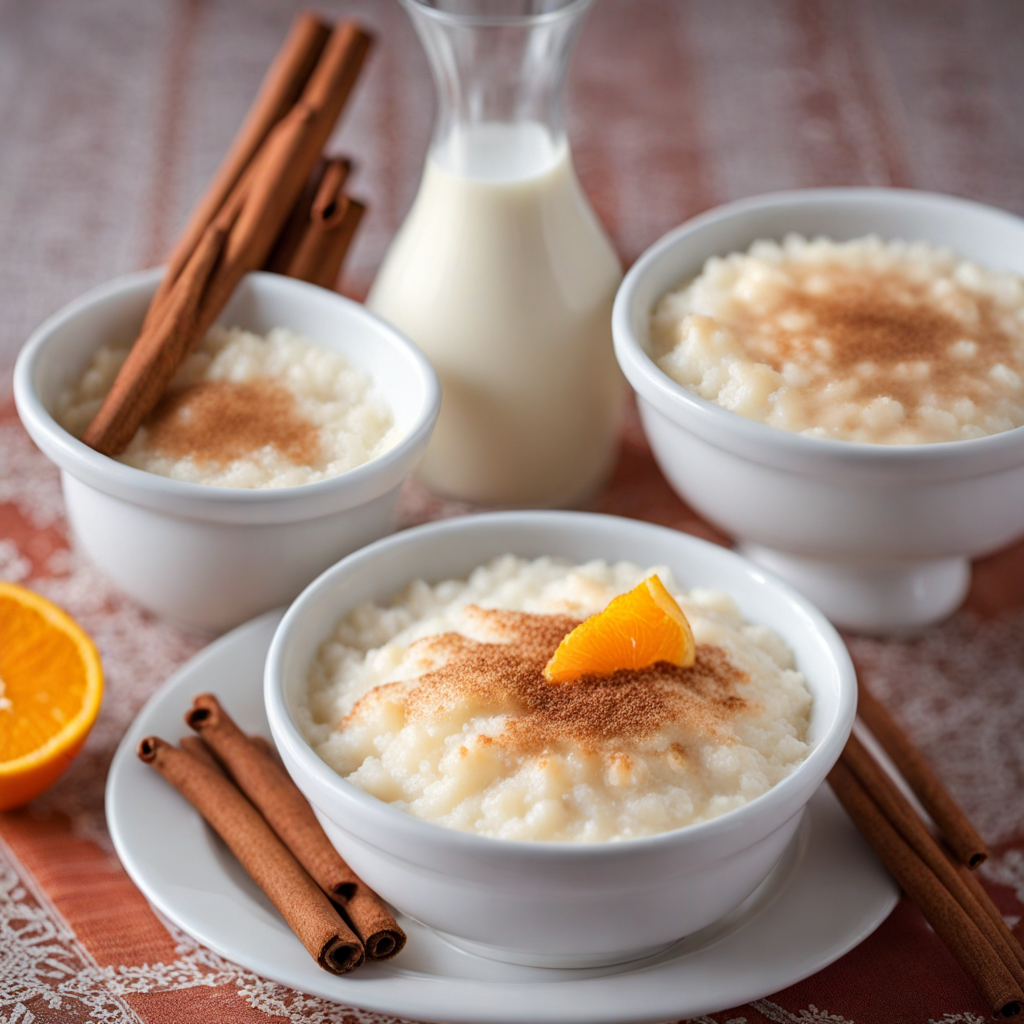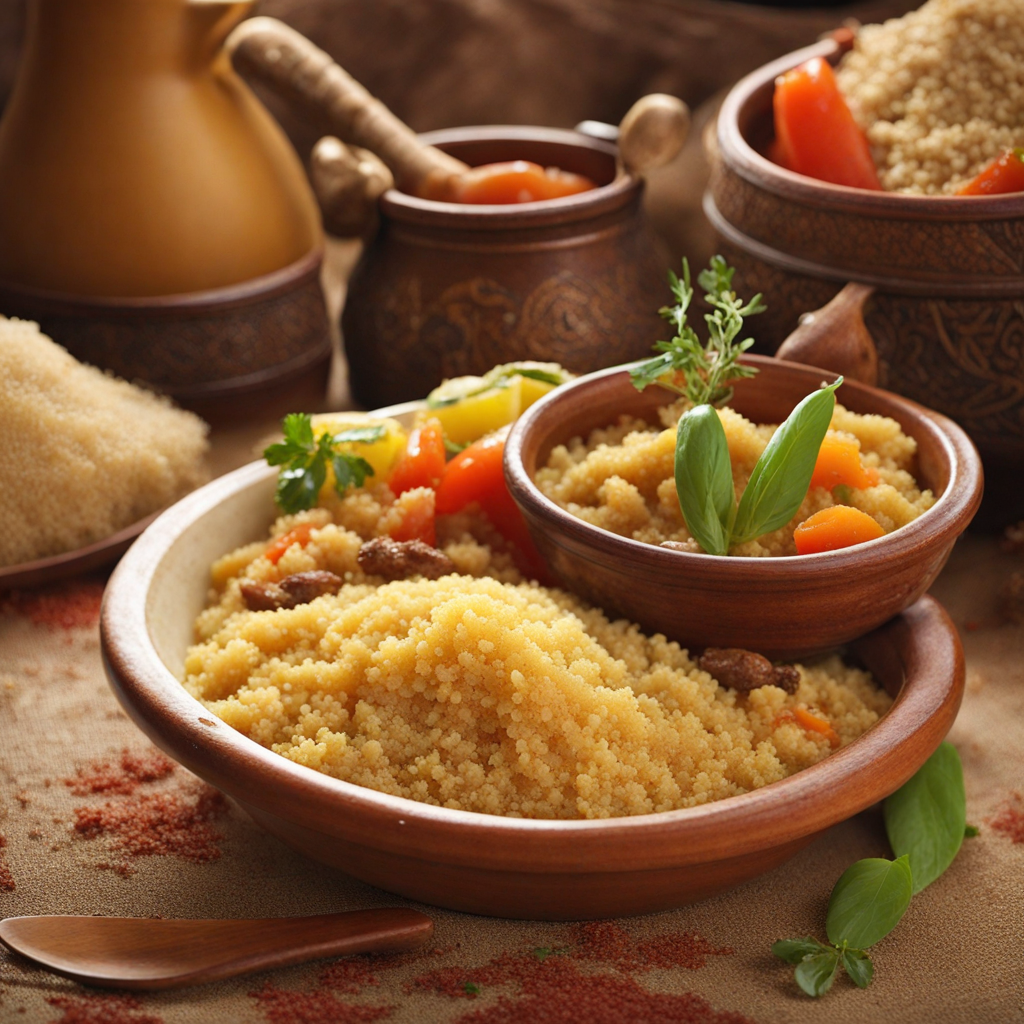Chermoula
Chermoula is a vibrant and aromatic marinade that hails from the rich culinary traditions of Morocco. This versatile blend typically combines fresh herbs such as cilantro and parsley, garlic, spices like cumin and paprika, and a splash of lemon juice or vinegar, creating a delightful mix of flavors. The combination of herbs and spices gives Chermoula its signature bright green color and a refreshing zing that enhances various dishes, making it a staple in Moroccan kitchens. Traditionally, Chermoula is used to marinate fish and seafood, infusing them with a depth of flavor that complements their natural sweetness. However, it is not limited to seafood alone; many chefs and home cooks also use it to enhance chicken, lamb, and even vegetables. The marinade can be grilled, baked, or used as a dipping sauce, showcasing its versatility. When cooked, the herbs and spices meld together, creating a mouthwatering aroma that can transport you straight to the bustling markets of Marrakech. What makes Chermoula truly special is its ability to bring together contrasting flavors that harmonize beautifully on the palate. The freshness of the herbs, the warmth of the spices, and the acidity of the citrus create a balanced profile that elevates any dish. For those looking to explore new tastes, Chermoula offers a unique opportunity to experience the essence of Moroccan cuisine, providing a burst of flavor that is both invigorating and satisfying.
How It Became This Dish
The Rich Tapestry of شرمولة (Chermoula): A Moroccan Culinary Gem #### Origins Chermoula, or شرمولة, is a vibrant North African marinade and condiment that has its roots deeply embedded in Moroccan cuisine. Its origins can be traced back to the Berber people, the indigenous inhabitants of North Africa, who have shaped the culinary landscape of the region for centuries. The word "chermoula" itself derives from the Arabic verb "to blend" or "to mix," which aptly describes the process of combining various herbs and spices to create this fragrant concoction. The fundamental components of chermoula typically include fresh herbs like cilantro and parsley, garlic, spices such as cumin and paprika, and a souring agent, often lemon juice or vinegar. This combination not only reflects the agricultural bounty of Morocco but also serves as a testament to the Berber and Arab influences that permeate the region's food culture. Over time, other ingredients like chili peppers, olives, and preserved lemons have been incorporated, showcasing the adaptability and regional variations of this beloved condiment. #### Cultural Significance Chermoula is more than just a marinade; it encapsulates the spirit of Moroccan culinary traditions. It is often used to flavor fish and seafood, particularly in coastal cities like Essaouira and Agadir, where fresh fish is abundant. The use of chermoula in seafood dishes is particularly significant because it reflects the Moroccan relationship with the Mediterranean Sea and the Atlantic Ocean, which provide a rich source of sustenance and cultural exchange. In Morocco, food is not merely sustenance but a vehicle for social interaction and cultural expression. Chermoula embodies this ethos, often featured in communal meals where family and friends gather to enjoy the rich flavors of Moroccan cuisine. The preparation of chermoula can be a communal activity in itself, with family members participating in the chopping of herbs and the blending of spices, reinforcing bonds and traditions. Chermoula is also symbolic of the Moroccan culinary practice of using fresh, local ingredients, which speaks to the country's agricultural heritage. The herbs and spices in chermoula are often sourced from local markets or home gardens, emphasizing the importance of freshness and quality in Moroccan cooking. This connection to the land and local produce is a recurring theme in Moroccan cuisine, which is characterized by its seasonal and regional diversity. #### Development Over Time The evolution of chermoula reflects the broader historical currents that have shaped Moroccan society. The spice trade, which flourished in North Africa since ancient times, introduced a variety of spices and herbs that enriched local culinary practices, allowing chermoula to evolve into the complex and aromatic marinade it is today. The influence of various cultures, including the Arabs, Moors, and Mediterranean peoples, can be seen in the diverse flavor profiles of chermoula. As Morocco entered the 20th century, the country experienced significant social and political changes, including the impact of French colonialism. This period brought new ingredients and cooking techniques, which further influenced the development of chermoula. The interaction of Moroccan cuisine with French culinary practices led to the incorporation of new flavors and methods, resulting in a more nuanced and layered approach to traditional dishes. In contemporary Morocco, chermoula has gained popularity beyond its traditional uses. While it remains a staple for marinating fish and seafood, it has also found its way into various meat dishes, salads, and even vegetable preparations, demonstrating its versatility. The rise of international gastronomy and the increasing interest in Moroccan cuisine globally have further propelled chermoula into the culinary spotlight. Today, chefs both in Morocco and around the world celebrate chermoula as a symbol of Moroccan culinary heritage. Many modern interpretations of chermoula highlight its adaptability, incorporating new ingredients such as yogurt or nut oils, while still honoring the traditional essence of the marinade. This evolution illustrates how food, while rooted in tradition, can also adapt and thrive in changing contexts. #### Chermoula in Modern Cuisine In recent years, chermoula has gained a reputation beyond North Africa, becoming a sought-after condiment in restaurants and home kitchens worldwide. Food enthusiasts and chefs alike have embraced its bold flavors, using it to enhance grilled meats, roasted vegetables, and even as a salad dressing. The globalized food landscape has allowed for creative reinterpretations of chermoula, leading to exciting fusions with other culinary traditions. In addition to its culinary versatility, chermoula is also lauded for its health benefits. The fresh herbs and spices used in the marinade are rich in antioxidants and have anti-inflammatory properties. This aspect resonates with contemporary culinary trends that prioritize health and wellness, further solidifying chermoula's place in modern gastronomy. #### Conclusion Chermoula is a testament to the rich tapestry of Moroccan cuisine, reflecting a blend of indigenous traditions and external influences that have shaped its development over centuries. From its origins in Berber culture to its role in communal dining, chermoula serves as a flavorful connection to Morocco's past, present, and future. The evolution of chermoula is emblematic of the broader narrative of Moroccan food, which is deeply intertwined with the country's history, geography, and cultural identity. As it continues to adapt and find new expressions in global cuisine, chermoula stands as a flavorful ambassador of Moroccan culinary heritage, inviting people around the world to savor its vibrant flavors and experience the warmth of Moroccan hospitality. Whether used to marinate fresh fish, enliven grilled meats, or brighten a simple vegetable dish, chermoula remains a cherished and dynamic element of Moroccan cuisine, celebrating the beauty of culinary traditions that continue to thrive in an ever-changing world.
You may like
Discover local flavors from Morocco


